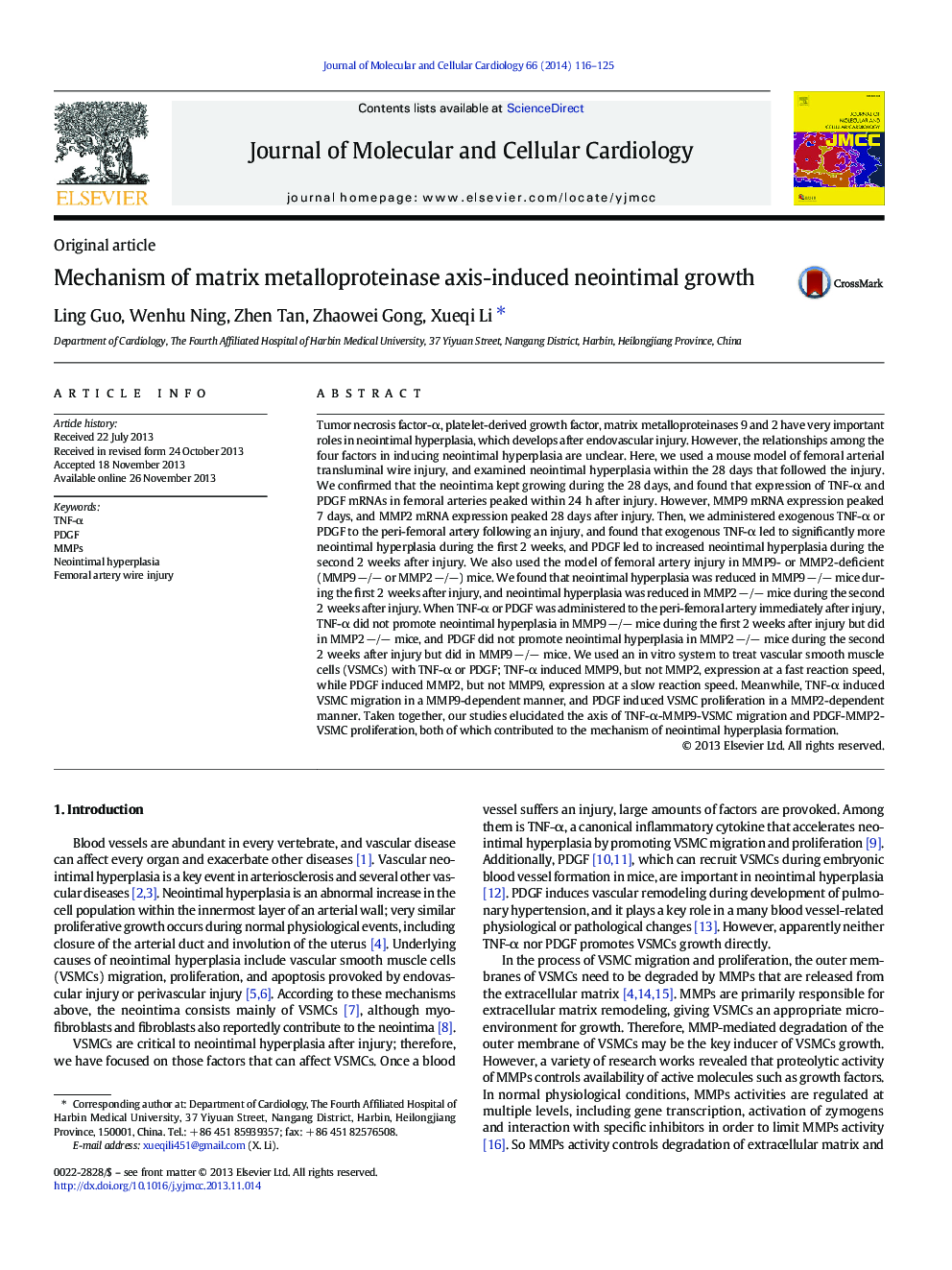| کد مقاله | کد نشریه | سال انتشار | مقاله انگلیسی | نسخه تمام متن |
|---|---|---|---|---|
| 2190557 | 1550439 | 2014 | 10 صفحه PDF | دانلود رایگان |
• Matrix metalloproteinase axis induced neointimal growth after endovascular injury.
• Axis of TNF-α-MMP9 and PDGF-MMP2 was involved.
• TNF-α induced VSMC migration in a MMP9-dependent manner.
• PDGF induced VSMC proliferation in a MMP2-dependent manner.
Tumor necrosis factor-α, platelet-derived growth factor, matrix metalloproteinases 9 and 2 have very important roles in neointimal hyperplasia, which develops after endovascular injury. However, the relationships among the four factors in inducing neointimal hyperplasia are unclear. Here, we used a mouse model of femoral arterial transluminal wire injury, and examined neointimal hyperplasia within the 28 days that followed the injury. We confirmed that the neointima kept growing during the 28 days, and found that expression of TNF-α and PDGF mRNAs in femoral arteries peaked within 24 h after injury. However, MMP9 mRNA expression peaked 7 days, and MMP2 mRNA expression peaked 28 days after injury. Then, we administered exogenous TNF-α or PDGF to the peri-femoral artery following an injury, and found that exogenous TNF-α led to significantly more neointimal hyperplasia during the first 2 weeks, and PDGF led to increased neointimal hyperplasia during the second 2 weeks after injury. We also used the model of femoral artery injury in MMP9- or MMP2-deficient (MMP9 −/− or MMP2 −/−) mice. We found that neointimal hyperplasia was reduced in MMP9 −/− mice during the first 2 weeks after injury, and neointimal hyperplasia was reduced in MMP2 −/− mice during the second 2 weeks after injury. When TNF-α or PDGF was administered to the peri-femoral artery immediately after injury, TNF-α did not promote neointimal hyperplasia in MMP9 −/− mice during the first 2 weeks after injury but did in MMP2 −/− mice, and PDGF did not promote neointimal hyperplasia in MMP2 −/− mice during the second 2 weeks after injury but did in MMP9 −/− mice. We used an in vitro system to treat vascular smooth muscle cells (VSMCs) with TNF-α or PDGF; TNF-α induced MMP9, but not MMP2, expression at a fast reaction speed, while PDGF induced MMP2, but not MMP9, expression at a slow reaction speed. Meanwhile, TNF-α induced VSMC migration in a MMP9-dependent manner, and PDGF induced VSMC proliferation in a MMP2-dependent manner. Taken together, our studies elucidated the axis of TNF-α-MMP9-VSMC migration and PDGF-MMP2-VSMC proliferation, both of which contributed to the mechanism of neointimal hyperplasia formation.
Journal: Journal of Molecular and Cellular Cardiology - Volume 66, January 2014, Pages 116–125
